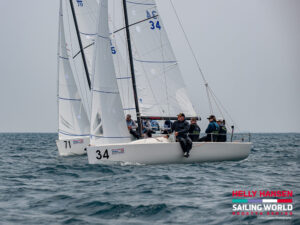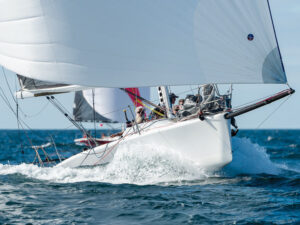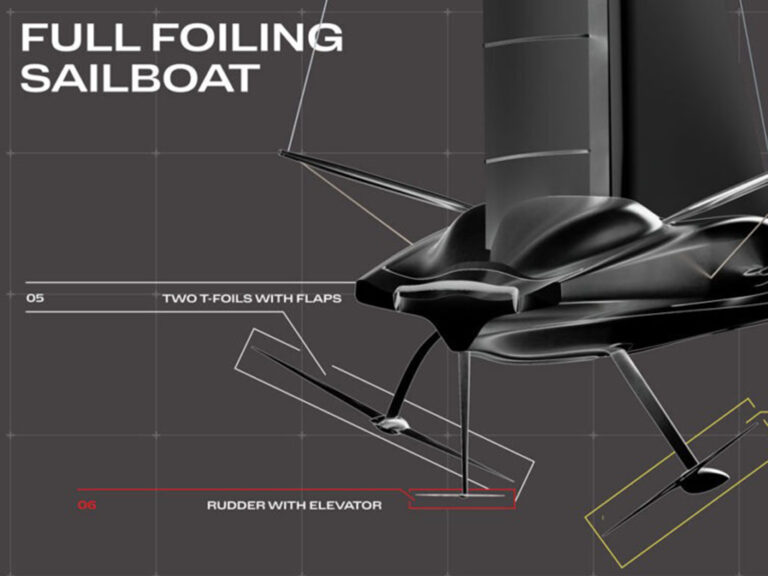
As an eight-year-old, Augustin Diaz moved with his family from Cuba to Clearwater, Fla., where he joined the Clearwater Optimist Pram club for $10. When the family moved to Miami a year later, he was ranked fourth among 110 kids. Diaz earned All-American honors at Tulane University three times and was College Sailor of the Year in 1974. A frequent Snipe class champion, Diaz works in a family medical equipment business and says he “disappeared” for 10 years when his kids were young. Now he’s racing again with a youthful enthusiasm, winning several major Star and Snipe regattas in 2002 and receiving a Rolex Yachtsman of the Year nomination. In 2003, Diaz has sailed well in the Star, and when he hit the Snipe winter circuit, he caught fire, winning three of four events. We talked with him after the final event in Nassau, Bahamas.
You sailed with a different crew in this series, and that’s normal for you, isn’t it?
Because I can’t always commit, I usually do what I call “crew by committee.” I’m not good enough to do well by myself, so I look for those I know are going to be able to help me. In the Star it’s the same as the Snipe-I’ve had three crews in the last year.
You sailed the first two Snipe events with Jon Rogers.
Jon and I got together for the first time two days before the Western Hemispheres last year, and the interesting thing about him is, he steps on the boat and immediately he’s in full race mode, trimming and balancing the boat. And what he also did that was awesome was pick up on what I needed help with. For example, I’m a very conservative starter. I can’t remember the last time I was over early. So he would give me a countdown and look to windward toward the race committee boat and give me information about what was going on there, so I didn’t have to turn and look. I could focus on my line sight, and gauging the boats to leeward.
I like to have a flow of info coming from the crew and to try to make decisions together. Even if I decide to do the opposite, it still helps me, because it forces me to think-to reinforce my conviction or think further and analyze what I’m doing.
In the two regattas in Nassau, I sailed with Lori Lowe, who’s a very accomplished sailor. She did an excellent job. She skippers more than she crews, but she did a good job adjusting; normally when you’re a skipper, you end up looking at the same things I’m looking at. Also, because of my success with Jon, we worked the same way, with her looking to windward, so we generally had good starts in Nassau also.
Nassau is Lori’s home waters. In the first race, we had our pre-race strategy discussion and decided where to start based on where we wanted to go. We went through it and as we started to execute, it seemed as if her husband, Jimmy, had also decided to protect the right. Well, we got the first two shifts, and bang, we were in the lead coming out of the right side, but where was Jimmy? I looked and said, “What’s going on here? That’s Jimmy over on the left.” Sure enough, Lori made the right call, and and we won the race.
What’s your main focus after the start? Speed or strategy?
What I usually do before racing is get as much weather info as I can. But I learned from Ed Adams not to get hung up on trying to be a forecaster. I just try to develop a feel for what I think the wind’s going to do. I almost hate to call the people I sail with crews. My gameplan is to involve them so that they consider themselves a co-skipper. On the way out we talk about what we think the forecast is telling us and make a general strategy.
For the first 5 minutes of the race, I’m very keen on watching the edges of the course to try to develop a feel for whether there’s a side that’s winning out. I get the crew focused on information on what I call my blind spot, from my left shoulder around my back to my right shoulder-generally to windward. How are the people on our hip doing? I’ll ask for information on speed and angle. That’s critical. I look a few times to see if I agree with what they’re saying and develop a level of trust.
When we get off the line there are times I want quiet. I want a lot of involvement in helping me sail the boat-trimming jib, hiking hard, and being very steady so you’re getting max speed. These are times I’m not worried about tacking, and it’s very critical to squeeze the very last drop of speed. The less I have to look, the faster we’ll go. So going back to your initial question: the answer is both. But there are times I want to be focused on going fast and I’ll say “speed only.”
|
|
| |
|

|
| |
| (C) Bill Welch|
| |
|
|
| |
| Augie Diaz (left) and Jon Rogers won the 65th Snipe Midwinter Championship in Clearwater, Fla.* * *|
| |
|
|
|
The Snipe website reports typically described you working the shifts. Do you ever go to a corner?
I’m not a good corner person. I’m very chicken about hitting a corner. That hurts me in a big fleet. In smaller fleets you can go up the middle and hit the shifts aggressively. For example, in the Don Q, with 40 boats, you had to work the edges more. In medium to light conditions, there’s always less wind in the middle, and in a couple races we went there and suffered. What I tried to do in that case is to work the inside of the favored edge. That way, in a 60-boat fleet, if you go the wrong way, at least your going to be mid-fleet. And if you’re on the favored side, you may not be first but you’ll be close.
Are you sometimes too careful?
My conservative approach sometimes gets the better of me. I have an aversion to starting close to the committee boat, so I have a problem if we determine we’re going right. If you’re over early, being near the boat is the first place you’re going to get caught. But if you start down the line, you’re no longer going to be the boat on the right. On Biscayne Bay, where the first two regattas were held, it’s generally a left-hand-favored course, and I did pretty well there. But not in the Bahamas. I told Lori I’m usually chicken about starting by the boat and that she’d have to put pressure on me to be there.
What are your strengths?
Besides finding good people to sail with me, I seem to have luck or natural feel for how to sail when I’m behind. I just sail harder. I have more fun. I take pleasure in improving my position. And I might set a goal. If we’re in the teens, I might say, if we can get an eighth, it would be a great race. I almost enjoy it more than winning.
Any weaknesses you need to work on?
Starting is a weakness, as I said, and so is shifting gears and being quicker to adjust my rig. I’m lagging on that in Snipes and Stars. In Nassau, after the breeze eased off, it took me a while to loosen my rig.
What’s your secret at almost age 49?
I’m in great sailing shape, and in the winter I sailed all the Star regattas. The beating I take in the Stars is the greatest education any sailor could ever want. You’re learning against legends. You just can’t help but learn, even if it’s by what I call the “sledgehammer technique.”
Any techniques you’ve brought from the Star to the Snipe?
They’re very similar boats, with no spinnaker. George Szabo was experimenting with sailing the Snipe straight downwind with some major heel. Kind of like you do in Lasers. I did some experimenting with that and there were conditions in medium to light air where it seemed to be quick.
How do you keep the business going when you’re sailing?
I never really leave. You can be virtual with computer and other devices like cell phones. It’s a little bit of a load at times when you want to be focused on sailing. But in a way it also helps me disconnect from the race.
Will you do the Olympic Trials next winter in the Star?
That’s a tough question since they’re here in Miami. It depends on who I can sail with-Mark Strube, my regular crew, deserves to sail with a guy with a better chance of qualifying. My problem is there are six really good guys, and I can beat two of them in any given regatta. But I can’t beat all six. The only real reason for me to go is that I can contribute by making the guy who wins better.
Do you have a lot of racing planned?
My kids are in their 20s. I decided a while ago that I’m going to go to work and I’m going to sail. I refer to this as my “selfish” period. I’ll take six or seven weeks a year off from work. Thankfully my girlfriend puts up with it. I thought after a couple years back in sailing I’d get over the need to do it, but the feeling isn’t going away. As long as my family supports this, I’m going to keep doing it.
For complete results of the 2003 Snipe Winter Circuit, http://www.snipe.org









